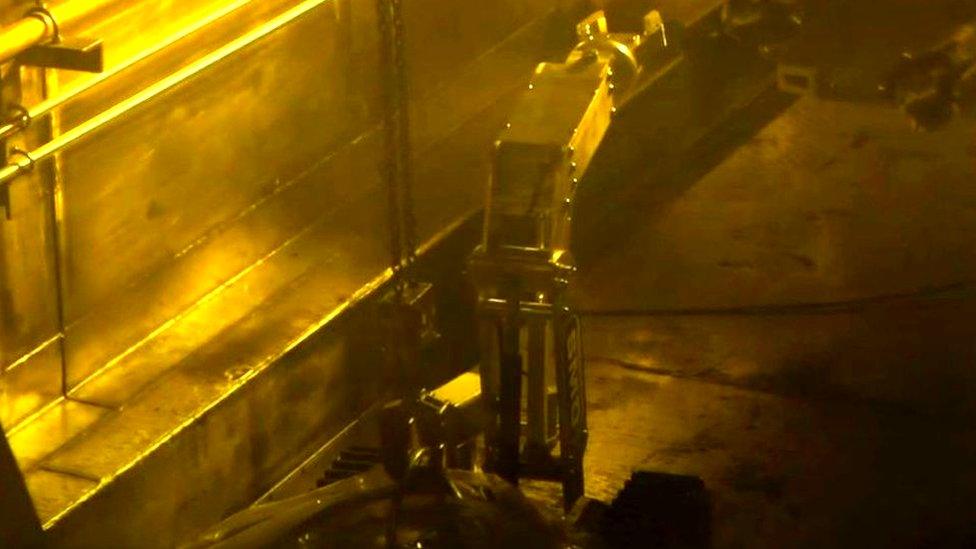Nuclear power: Radioactive waste to be buried at Gwynedd plant
- Published
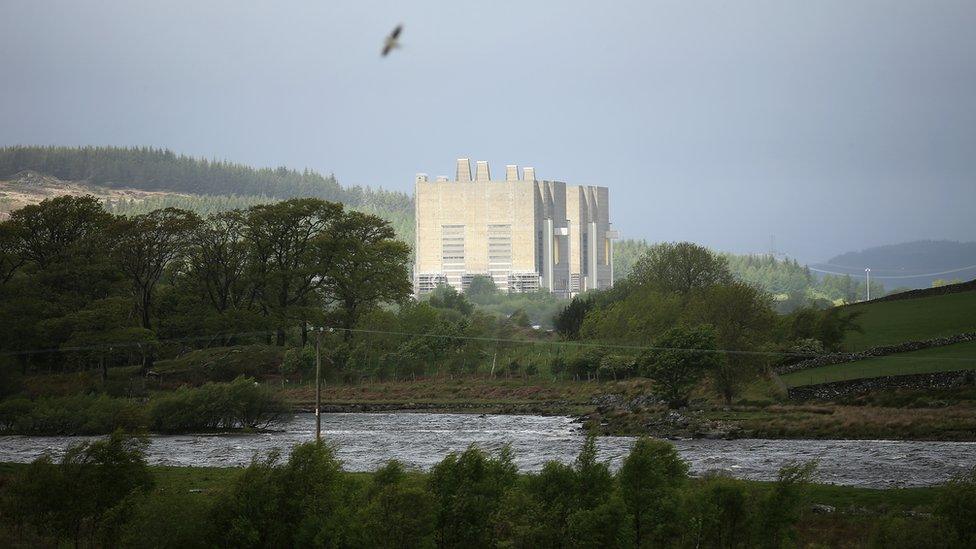
Trawsfynydd nuclear power station was shut down in 1991
Low levels of radioactive waste could be buried at the site of a former nuclear power station, under new plans.
Magnox, owner of the Trawsfynydd site in Gwynedd, said it was considering burying some of the waste below ground and capping it with concrete.
The company said the proposal was unusual and was one of two options being considered.
Anti-nuclear group Cadno said it would cause "serious safety issues" and wants the waste stored safely above ground.
Trawsfynydd stopped generating electricity in 1991 after operating for 25 years and is in the long process of being decommissioned.
About 99.9% of all the radioactive waste has been removed from the site.
It employs nearly 300 people and there have been talks about building a new small reactor on site.
New guidance issued in 2018 on the decommissioning of nuclear sites, external allows waste to be disposed of "somewhere suitable", including the site that produced the waste.
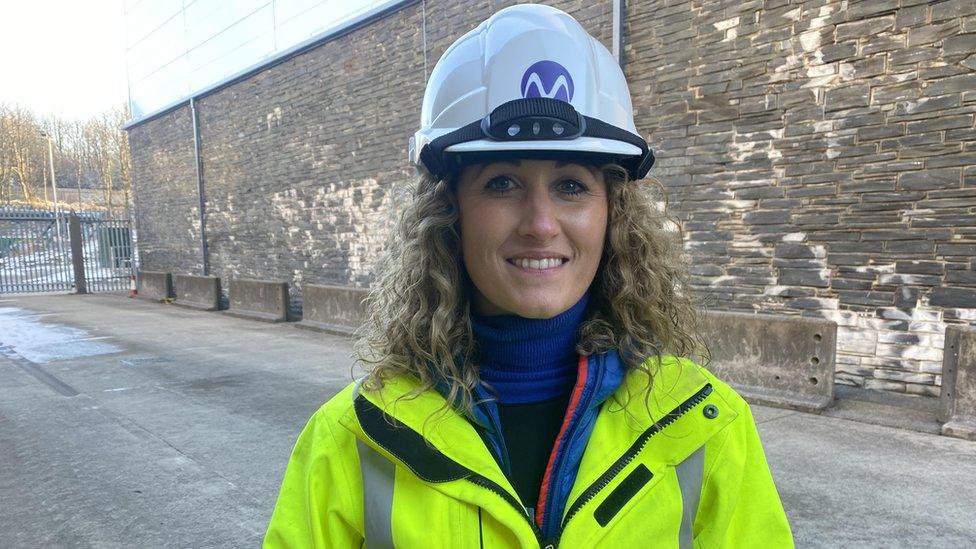
Angharad Raynor said Magnox's number one priority was the safety of the public
Magnox is looking at the demolition of the site's former cooling ponds complex, which was used to store and cool used nuclear fuel elements after they were removed from the reactors.
Much of the waste is made of rubble, scrap metal, foundations and soil.
Magnox site director Angharad Raynor said: "These demolition arisings contain very low levels of radioactive material.
"If we were able to transport the material to another site, within the UK, this would mean over 2,000 lorry loads of rubble going across our roads, in our communities."
She added the safety of the public was the firm's "number one priority", and people in the area would be consulted.
Magnox intends to submit an application to the regulators in September 2023, but no decision will be taken for a couple of years.

Iwan Jones said he does not see a problem with what Magnox does, as long as it is safe
Iwan Jones, who lives and works in Trawsfynydd, said: "At least they are discussing with the local community. If it's safe, I don't see a problem with what they choose to do with it."
Awel Irene from Cadno said the plans could cause "massive problems" in future.
"Both options are totally ridiculous, the option of sending it away and the option of burying it, they cause serious safety issues for the local community and for the environment.
"My understanding is the only answer when it comes to decommissioning is that you keep the level above ground and monitor it for hundreds of years."
- Published12 November 2022
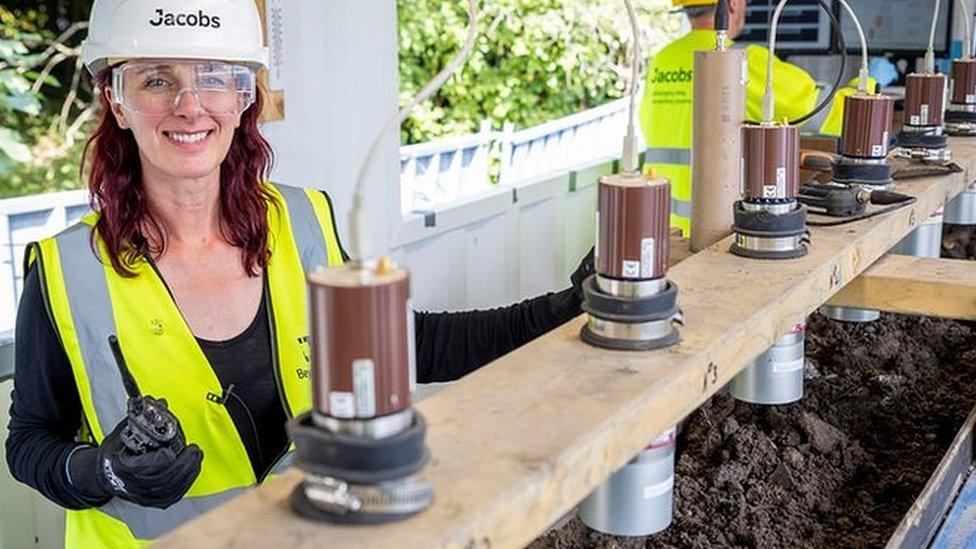
- Published21 October 2022
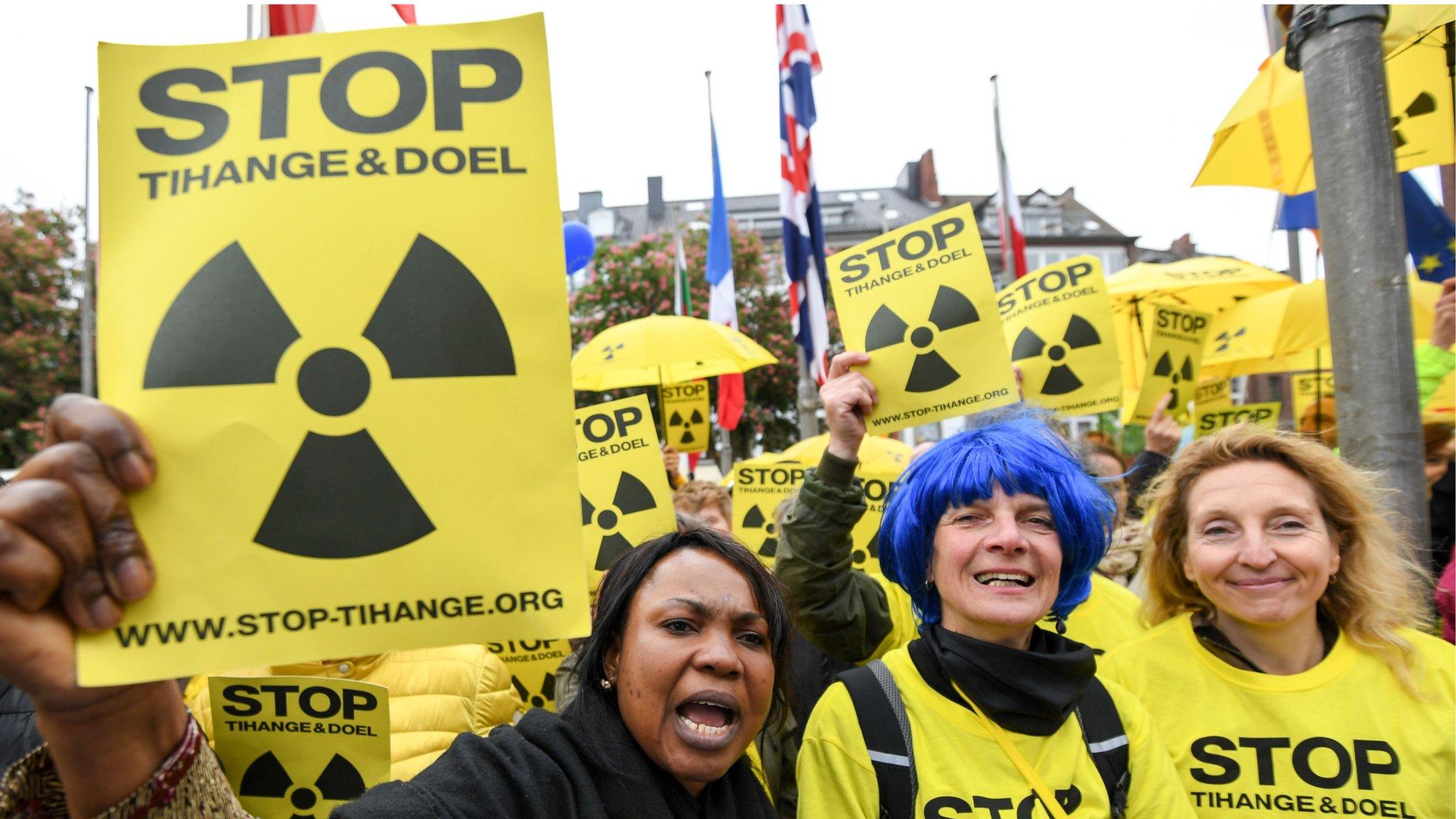
- Published29 September 2022
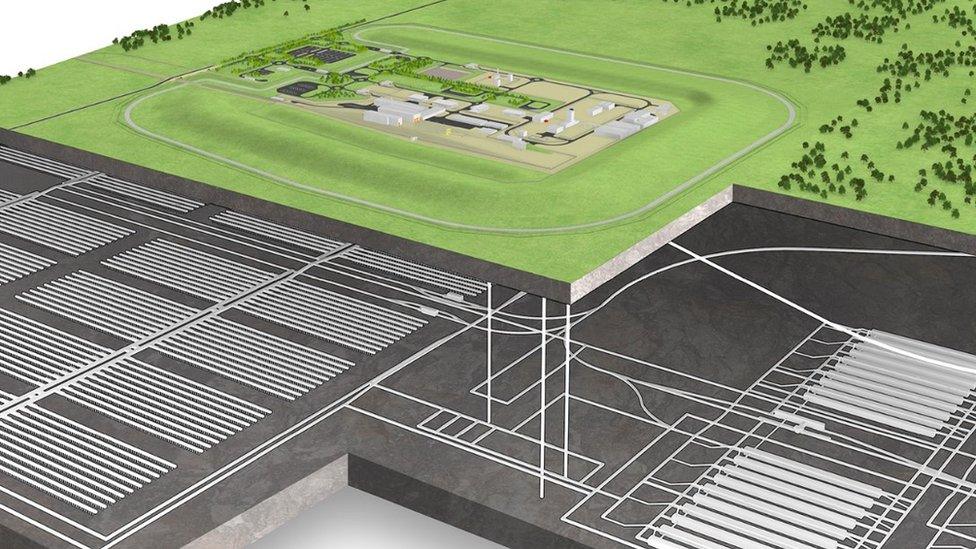
- Published30 August 2022
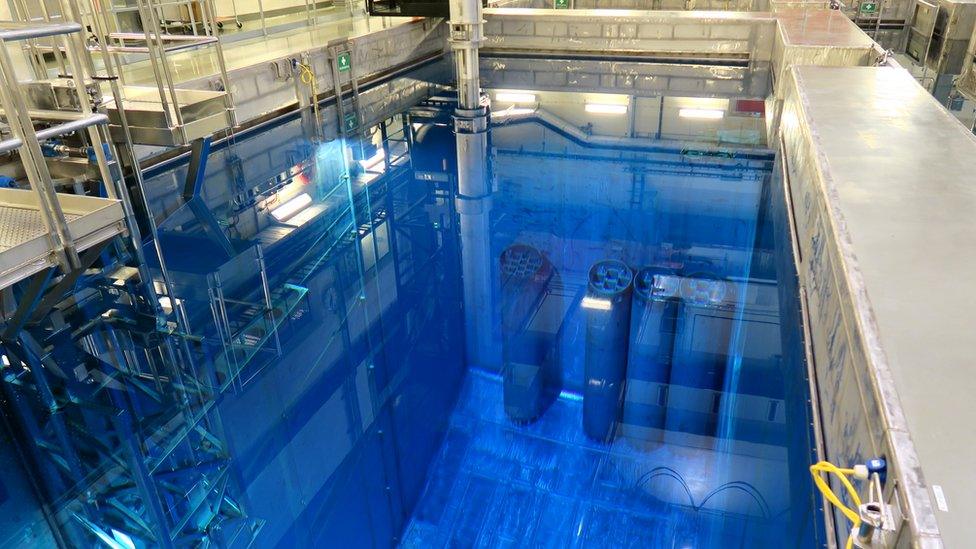
- Published29 September 2021
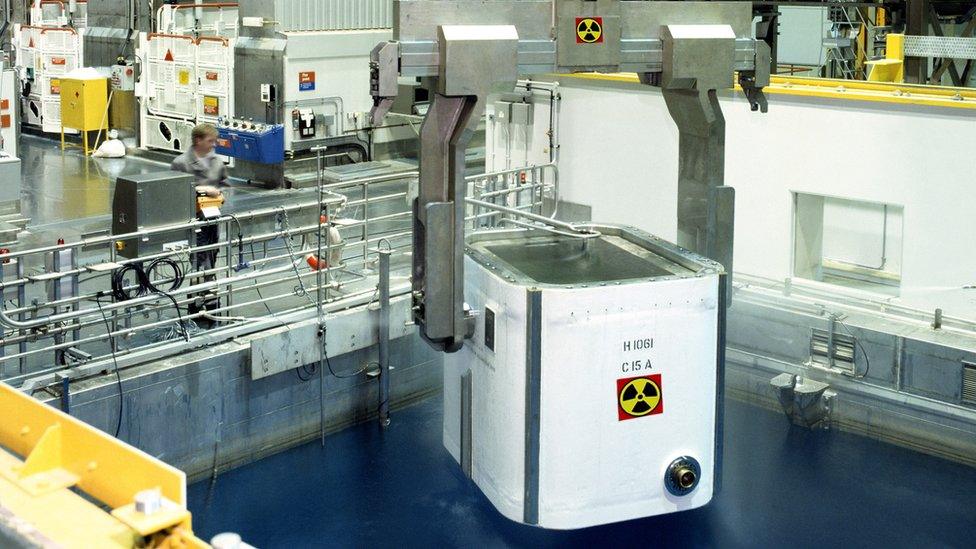
- Published30 July 2020
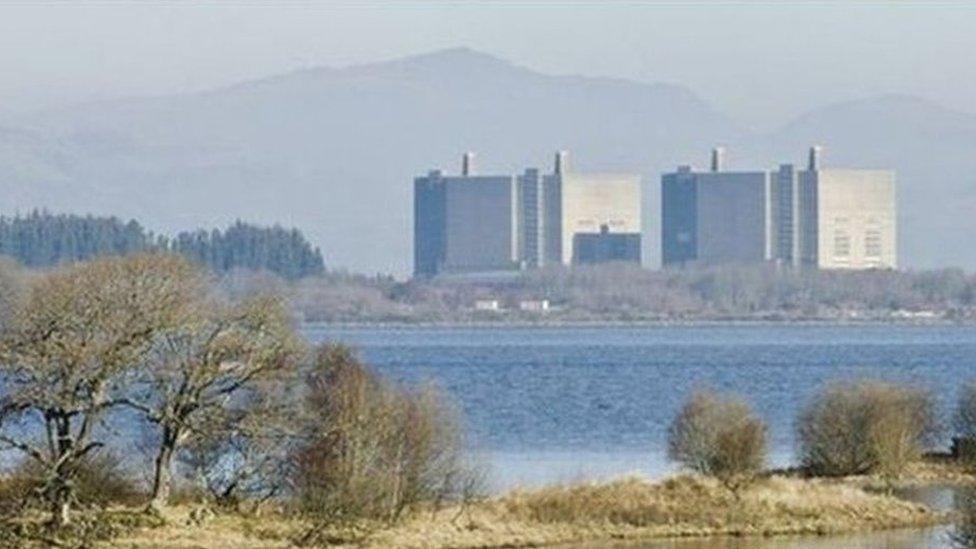
- Published27 November 2018
